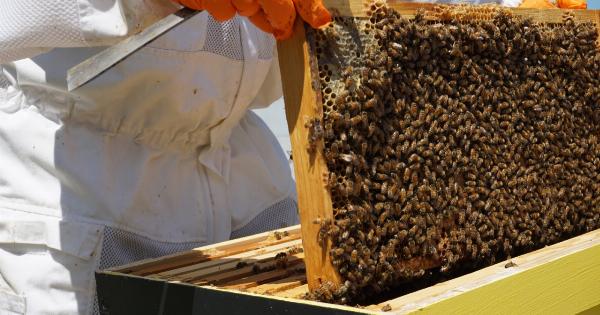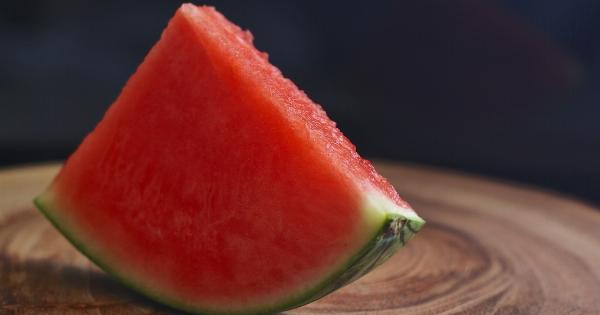Genetically engineered foods, also known as genetically modified organisms (GMOs), have become increasingly prevalent in our modern food system.
These foods are created through the manipulation of an organism’s genetic material, resulting in desired traits or characteristics that may not have occurred naturally. While genetic engineering has raised concerns regarding potential health and environmental risks, it has also offered solutions to various agricultural challenges.
In this article, we will explore some of the most frequently genetically engineered foods, their benefits, controversies surrounding their consumption, and their impact on society.
1. Genetically Engineered Corn
Corn is one of the most commonly genetically engineered crops. Through genetic modification, corn varieties can possess traits like insect resistance, herbicide tolerance, and enhanced nutritional value.
Bt corn, for example, contains a gene from the bacterium Bacillus thuringiensis, which produces a toxin deadly to certain insects. This modification reduces the need for chemical pesticides, benefiting both farmers and the environment.
2. Genetically Modified Soybeans
Soybeans are another significant genetically engineered crop. Genetic modification has enabled the production of herbicide-resistant soybeans, allowing farmers to control weeds effectively.
Additionally, genetically modified soybeans may contain altered fatty acid profiles or increased levels of certain nutrients, potentially improving their nutritional value.
3. Modified Rice Varieties
Rice is a staple food for a significant portion of the world’s population. Genetic engineering has been employed to develop rice varieties with enhanced nutritional content.
For instance, Golden Rice is a genetically modified rice variety fortified with beta-carotene, a precursor of vitamin A. This innovation aims to combat vitamin A deficiency, which can lead to severe health issues, particularly in developing countries.
4. Genetically Engineered Potatoes
Genetically modified potatoes have been developed to resist pest attacks, reduce bruising, and improve storage life.
These modifications can benefit both farmers and consumers by reducing crop losses, minimizing the need for harmful pesticides, and ensuring a longer shelf life for potatoes.
5. Herbicide-Tolerant Cotton
Cotton is not only an important crop for textile production but also plays a vital role in the global economy.
Genetic engineering has allowed the development of herbicide-tolerant cotton varieties, reducing the competition between cotton plants and weeds. This modification simplifies weed control and helps maintain high yields of cotton fiber.
6. Genetically Modified Papaya
Papaya ringspot virus (PRSV) is a devastating disease that affects papaya plants. Genetic engineering has produced genetically modified papayas resistant to PRSV.
This innovation has played a crucial role in reviving the papaya industry in regions where the virus was prevalent, ensuring a stable supply of this tropical fruit.
7. Genetically Engineered Salmon
Aquaculture, the farming of fish, has been enhanced through genetic engineering.
One example is genetically modified salmon, often referred to as “Frankenfish.” These salmon are modified to reach market size faster by incorporating genes from other fish species. However, concerns surrounding the potential environmental effects and labeling regulations have made genetically engineered salmon a topic of controversy.
8. Genetically Modified Tomatoes
Genetically engineered tomatoes have been developed to improve traits such as shelf life, disease resistance, and nutritional value.
Flavr Savr, the first commercially available genetically modified tomato, possessed an extended shelf life due to reduced softening enzyme activity. Although it is no longer widely available, the development of genetically modified tomatoes has paved the way for advancements in crop breeding techniques.
9. Bioengineered Sugar Beets
Sugar beet crops have been genetically engineered for herbicide tolerance, allowing for effective weed control.
Additionally, genetically modified sugar beets have been developed to be resistant to certain viruses, minimizing crop losses and maintaining a stable supply of sugar.
10. Genetically Engineered Apples
Genetically modified apples have been developed to resist browning when exposed to air. By suppressing the activity of the enzyme responsible for browning, genetically engineered apples offer consumers a longer shelf life and reduced food waste.
Controversies Surrounding Genetically Engineered Foods
Despite the potential benefits of genetically engineered foods, they have faced significant controversies and concerns.
Environmental Concerns
One major concern is the environmental impact of genetically engineered crops.
Critics argue that the cultivation of genetically modified organisms can lead to unintended environmental consequences, such as the development of herbicide-resistant superweeds or harm to non-target organisms like beneficial insects and pollinators. Additionally, the potential gene flow from genetically engineered crops to wild relatives raises concerns about altering natural ecosystems.
Health Risks and Safety Assessments
Another concern surrounding genetically engineered foods revolves around their potential human health risks. Extensive safety assessments are conducted before genetically modified crops are approved for commercial cultivation.
However, some skeptics argue that the long-term effects of consuming genetically engineered foods are not yet fully understood. They point to studies suggesting potential allergenicity or other negative health impacts, fueling the debate about the safety of GMOs.
Ethical Considerations
Genetic engineering has raised ethical questions about the artificial manipulation of living organisms.
Some argue that altering an organism’s genetic makeup through genetic engineering disrupts nature and goes against the principles of biodiversity and ecosystems. Additionally, the patenting of genetically modified seeds by biotechnology companies raises concerns about the control and ownership of food production.
Benefits of Genetically Engineered Foods
Despite the controversies, genetically engineered foods offer several potential benefits:.
Insect and Disease Resistance
Genetically engineered crops can be engineered to be resistant to certain insects or diseases, reducing the need for chemical pesticides.
This benefits both farmers, as they can spend less on expensive pesticides, and the environment, as it decreases chemical pollution.
Improved Nutritional Content
Genetic engineering can enhance the nutritional content of foods. For example, Golden Rice was developed to address vitamin A deficiency, which affects millions of people globally.
Other genetically modified crops aim to increase the levels of essential nutrients to combat malnutrition in specific regions or populations.
Reduced Food Losses
Genetically engineered crops with improved traits like disease resistance or extended shelf life can help reduce post-harvest losses.
This is particularly significant in regions with inadequate storage facilities or limited access to markets, where crop losses can have severe consequences on food security.
Increased Crop Yields
Genetically modified crops can have higher yields due to their enhanced tolerance to pests, diseases, or environmental conditions. By improving crop productivity, genetic engineering plays a crucial role in meeting the growing global demand for food.
Explore the most frequently genetically engineered foods, their benefits, controversies, and impact on society. Learn about genetically modified crops like corn, soybeans, rice, potatoes, and more.































